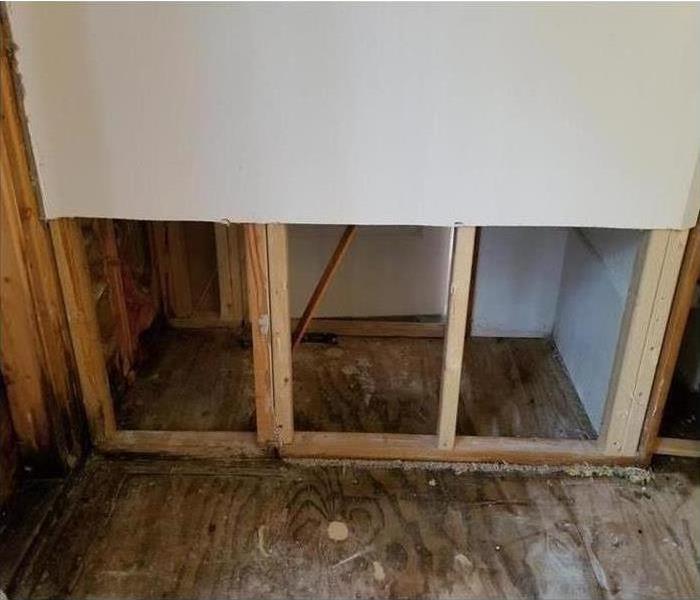Understanding a Flood Cut
12/15/2021 (Permalink)
Unless you have experienced past house flooding or are an experienced home renovator, there is a good chance that you do not have the phrase “flood cut” in your vocabulary. For the typical homeowner, many questions come to mind when the water restoration specialist uses this expression after assessing the storm damage in your home.
What Does “Flood Cut” Mean?
• A flood cut refers to the removal of drywall from the bottom portion of the rooms in your home that experienced water damage.
• Typically, this cut is made between 12 – 18 inches above where the water damage stopped.
• The restoration specialists then tear out the drywall below the flood cut line.
When Is a Flood Cut Necessary?
• After flooding, the excess water is removed from your house. However, there may be moisture behind the walls and the drywall may be damaged. Removal of the bottom portion of the wall allows the contractors access to the interior structures of your home.
• If there is contamination in the water that touches the drywall, such as from sewage backup, all affected walls require removal to prevent the spread of bacteria.
• When insulation is present behind water-damaged walls, it is necessary to remove the drywall because insulation cannot be properly dried out or replaced with the wall intact.
How Does a Flood Cut Work?
• Restoration contractors begin the flood cut process soon after water removal to prevent the formation and spread of mold, which can occur within 24 – 48 hours.
• The flood cut line is measured and determined before a laser level marks the wall. A tarp is placed to catch the debris, and the cut is made.
• Once the restoration specialists inspect behind the drywall, another cut may be needed if the damage is larger than expected.
• Damaged materials are removed and adequate ventilation is put in place.
By knowing the meaning of “flood cut”, you are one step closer to understanding the terminology used in your home’s recovery from flooding in our area.






 24/7 Emergency Service
24/7 Emergency Service
